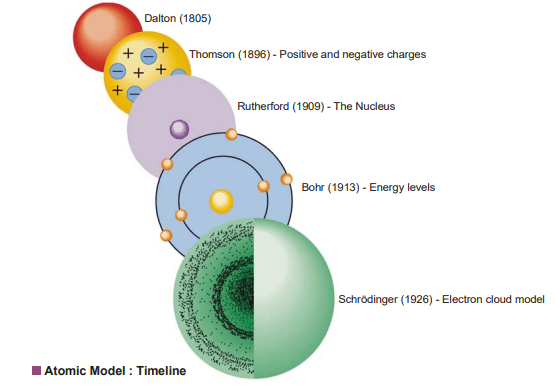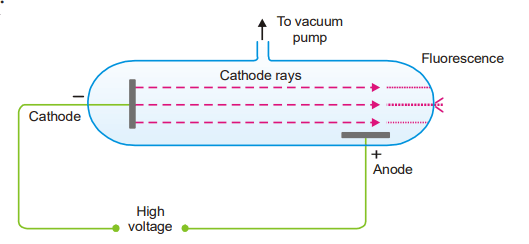Table of Contents
Discovery of electron
Discovery of electron: All matter, according to John Dalton (1805), is made up of tiny particles called atoms. He imagined the atom as a single hard solid particle that could not be subdivided. By the end of the nineteenth century, enough scientific data had been collected to indicate that the atom is made up of even smaller particles. Fundamental particles are the subatomic particles that make up the universe. The number of subatomic particles that have been discovered is enormous. The proton, neutron, and electron are the three most crucial to us. It’s a fascinating narrative of how these fundamental particles come together to form the atom’s interior structure.
The main landmarks in the evolution of atomic structure are:
1896 J.J. Thomson’s discovery of the electron and the proton
1909 Rutherford’s Nuclear Atom
1913 Mosley’s determination of Atomic Number
1913 Bohr Atom
1921 Bohr-Bury Scheme of Electronic Arrangement
1932 Chadwick’s discovery of the neutron.

Cathode rays -the discovery of electrons
The investigation of the electric discharge in the discharge tube resulted in the discovery of the electron (J.J. Thomson, 1896). A glass tube with metal electrodes fused in the walls makes up the discharge tube. A pump can be used to pull air through a glass side-arm. The electrodes are wired to a high-voltage source (10,000 volts) and the air is partially evacuated. The remaining gas in the tube begins to glow as the electric discharge flows between the electrodes. When almost all of the gas within the tube is evacuated, the glow is replaced by faintly light ‘rays,’ which generate fluorescence on the glass at the far end far from the cathode.

Properties of cathode rays
- They move away from the cathode in straight lines, casting shadows on metallic objects in their route.
- Cathode rays cause a tiny pin-wheel in their path to spin mechanically. As a result, they must be material particles with kinetic energy.
- When they strike the discharge tube’s glass wall, they generate fluorescence (a light).
- They impact on a metal foil that has been heated to incandescence.
- When cathode rays collide with a metallic object, they create X-rays.
- Cathode rays are repelled by both the electric and magnetic fields, suggesting that they are streams of tiny particles with negative charge.
By counterbalancing the effect of magnetic and electric fields on cathode rays. Thomson was able to work out the ratio of the charge and mass (e/m) of the cathode particle. In SI units the value of e/m of cathode particles is – 1.76 × 188 coulombs per gram. As a result of several experiments, Thomson showed that the value of e/m of the cathode particle was the same regardless of both the gas and the metal of which the cathode was made. This proved that the particles making up the cathode rays were all identical and were constituent parts of the various atoms. Dutch Physicist H.A. Lorentz named them Electrons.
Electrons are also obtained by the action of X-rays or ultraviolet light on metals and from heated filaments. These are also emitted as β-particles by radioactive substances. Thus it is concluded that electrons are a universal constituent of all atoms.
Make sure check our amazing article: Measurement of e/m for electrons